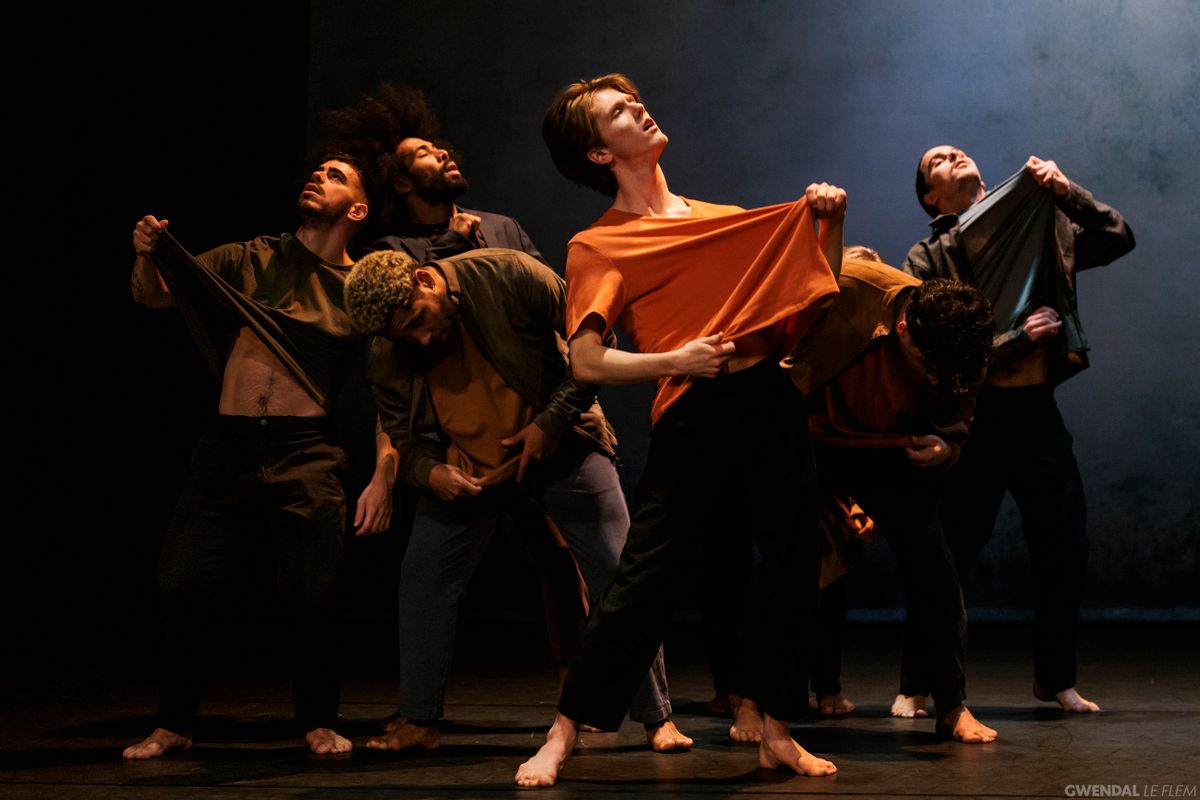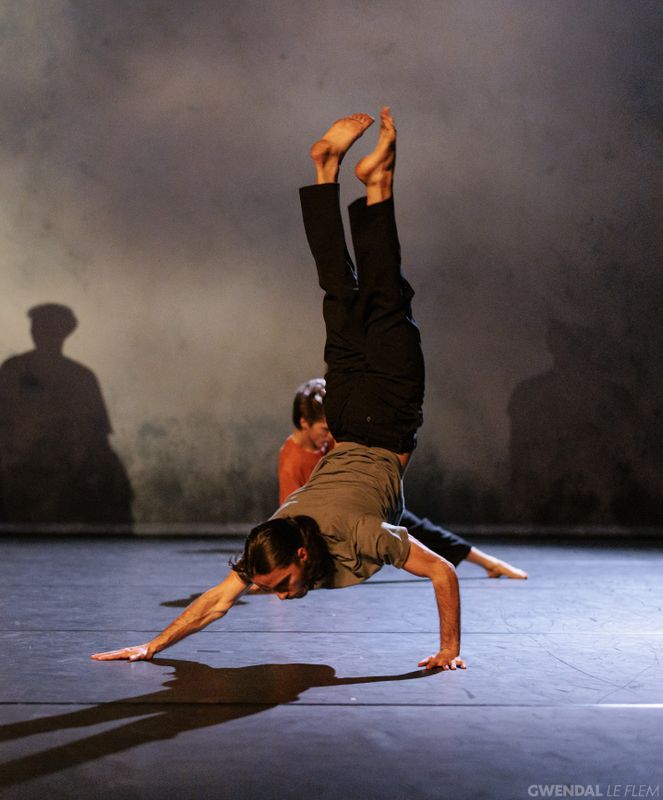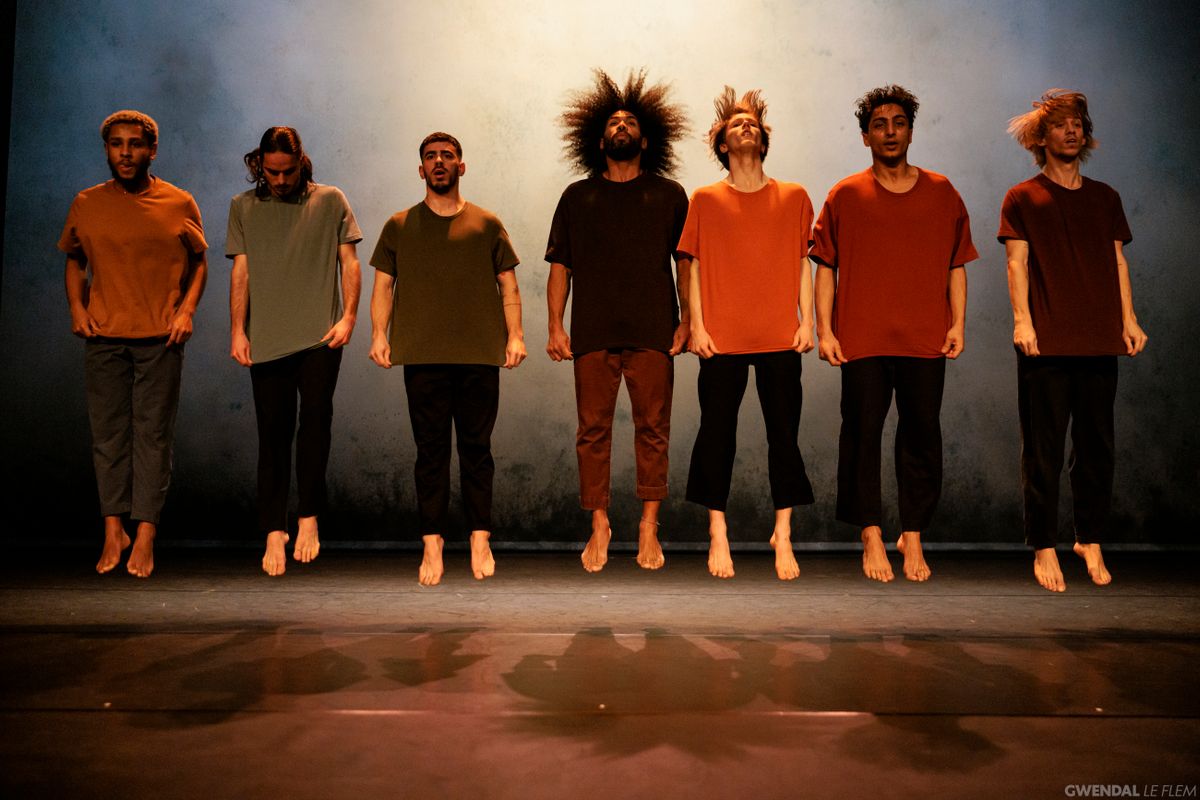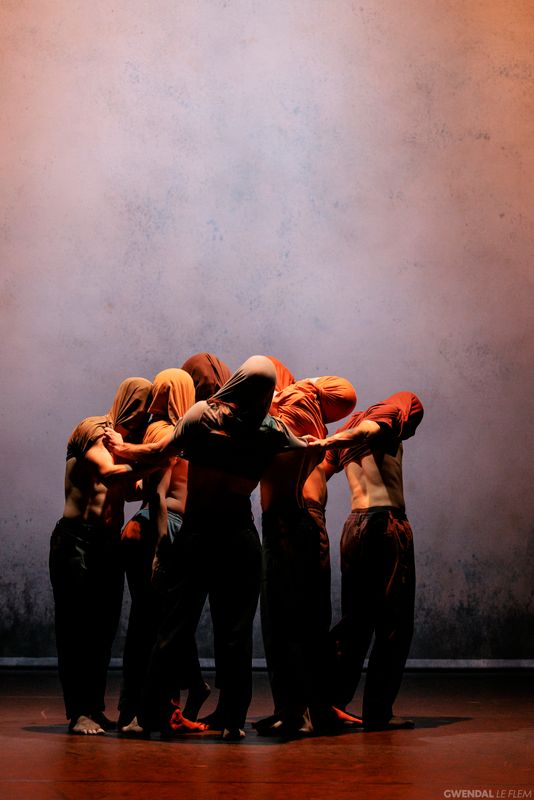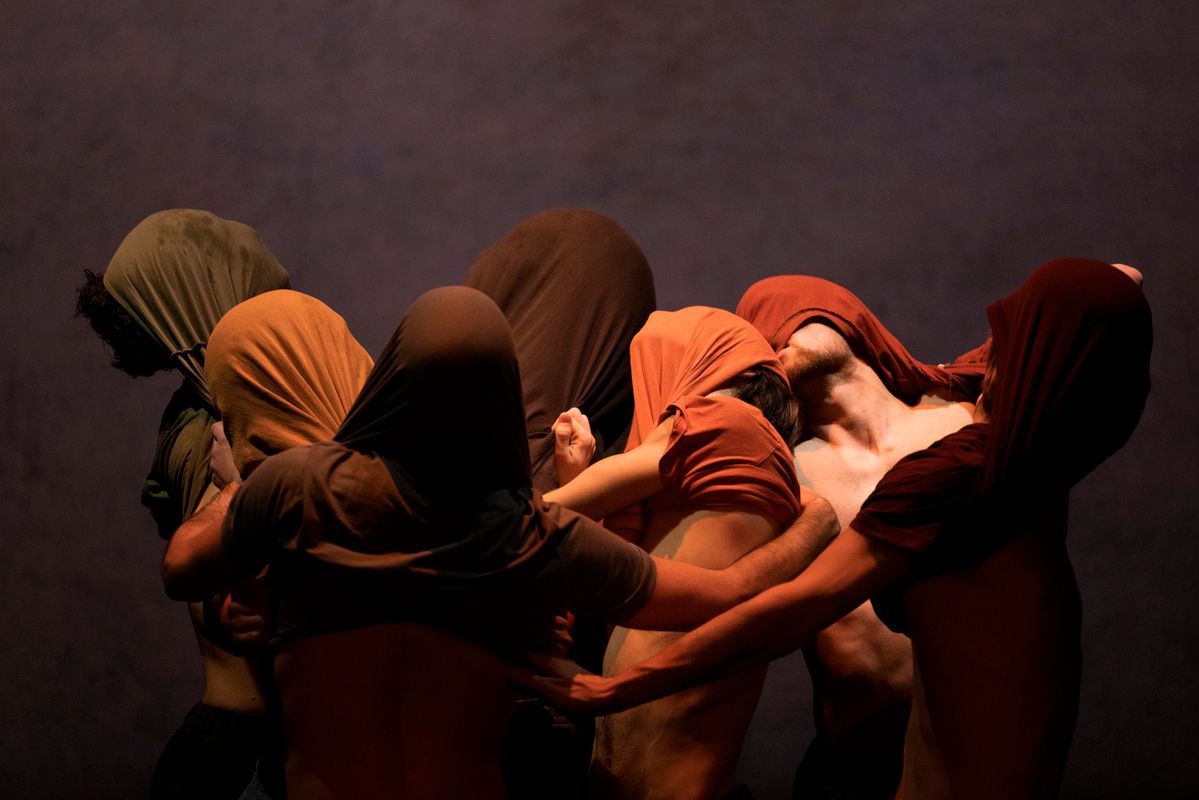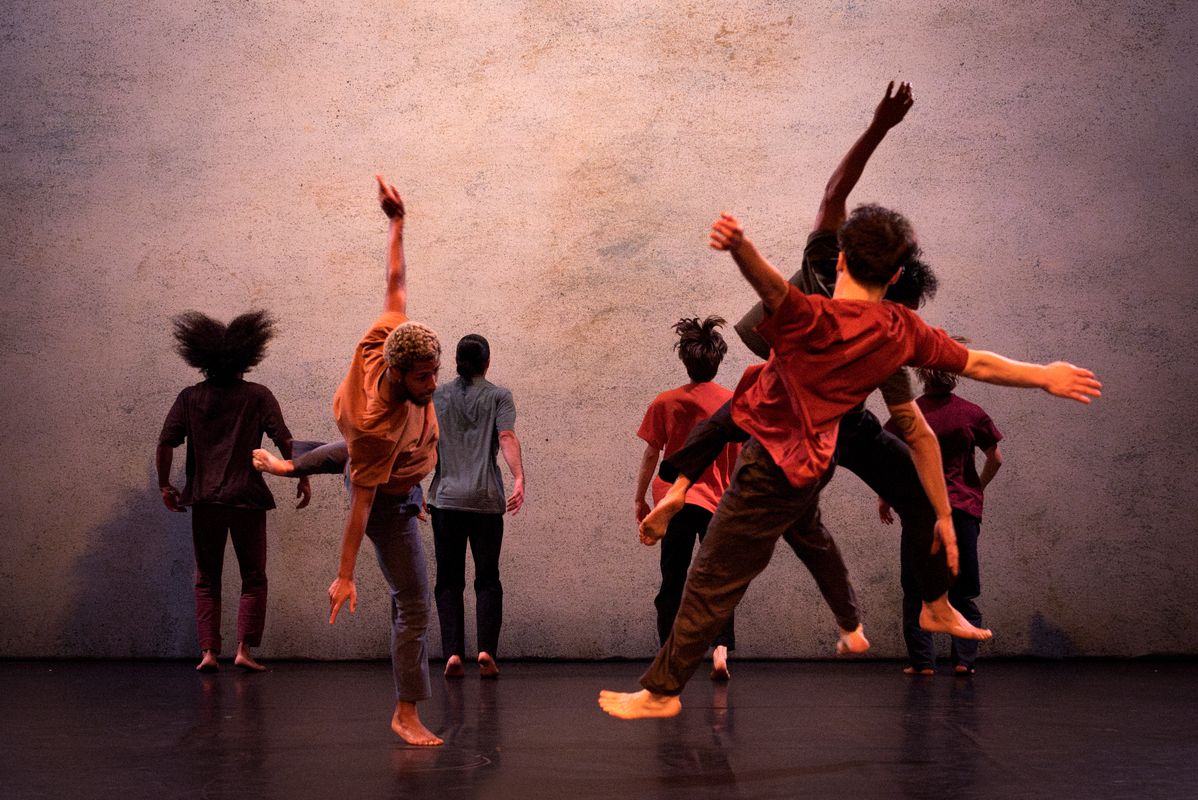Näss
-
4 apr20:00 - 21:00TR25 Schouwburg, RotterdamGrote zaal
Rang 1 Standaard € 25,00 TR Pas € 20,00 Rotterdampas € 20,00 t/m 30 jaar € 12,50
English
"Exciting, energizing rhythm in brilliant choreography" - Theaterkrant
The power of an unstoppable breath, both musical and choreographic – carries us to new heights in this piece Näss (People), by Fouad Boussouf. The choreographer remembers the exceptional vibe of the musical group Nass el Ghiwane, in 1970s Morocco.
Using a range of traditional sounds, the group was also linked to popular uprisings of the time. Is there not an analogy to be made to hip hop’s continuing search for its origins, its roots? Onstage there are seven men, measuring, confronting each other with a stack of diverse techniques, each dancer fiercely committed to his own unique style and strength. The choreographer has figured out how to orchestrate, to shape, to compose this group work, keeping us entirely off balance. His unending combinations of movement retain the nuances and color of his native country (in fact Boussouf took the entire group there for a time during the rehearsal process), while allowing the dancing to channel multiple urban dance styles as well. There is the feeling of a great rite, perhaps a trance, imprinting with the sacred commotions of Näss (People).
“The story of the famous 70s Maghreb Moroccan group
Nass el Ghiwane was an important element in inspiring
me to create this work. The lyrics and language they used
reminded me of the strange link they had to popular protests
of that time, and the rap and hip hop culture of that time in
the United States. In their lyrics I found strong hip hop vibes
involving ancestral traditions, which are still valid and alive.
I created Näss like a breath, physical and mystical, reminding
me how essential it is to remain anchored to the earth,
feeling its vibrations.” - Fouad Boussouf
For Fouad Boussouf, dance is pure impulse, momentum, movement. These words also define his artistic journey, driven by his innate curiosity and his desire to escape. His early years in Morocco, living in an isolated village in the region of Moulay Idriss, were filled with festive family events and a natural environment of clean, monastic simplicity. When Fouad was seven, his family moved to France, to Romilly-sur-Seine, near Troyes, and he stepped into a new universe, in which he had to learn quickly about culture and societal codes. As a teenager he began doing hip hop to cassettes by Prince and Michael Jackson; the form was initially considered a socially acceptable physical exercise, but for him hip hop became the building blocks for his personal style of movement, in which the body’s will to exceed, to go farther – brought him recognition from his peers.
He finished his education in Chalons-en-Champagne, where he also took workshops led by the circus students from the CNAC (the National Center for Circus Arts). He moved to Paris in 2000 and began studying social sciences at the University of Paris XII in Créteil, where he also taught classes in street dance, first informally, then as an accredited teacher. He continued studying at the Academy of the Cité Véron, participated in the Suresnes Cités Danse Festival and performed with Farid Berki and Pierre Doussaint. After having presented his DESS degree on hip hop, he took a seven month road trip in Australia, beginning a long cycle of activities layering pedagogical, creative and travel plans, which also took him to Egypt
and to Russia. When he finally returned to France he decided to focus on dance, and at the age of 27 he founded the Compagnie Massala. In 2008- 2009 he created solos and a trio, and in 2010 he created his first group work, Déviations (Detours).
Since then he has been creating non-stop, embodying the momentum that has characterized his approach to his art and his life. His work is hybrid, deliberately without labels, profoundly present and in the moment, always incorporating the hip hop movement vocabulary. Over the years he has built a dance language channeling movement spontaneity and the idea of nonstop movement, which has no beginning, no ending. His dancers are inspired by this dynamic which sets them outside their normal movement patterns,
generating an extraordinary, cyclical energy onstage, notably in his recent works Näss (People) in 2018, and in Oüm (2020), an homage to Oum Kalthoum – which affirmed his place in the international dance scene.
For Boussouf, the principal artistic instrument is the body, of course, but he also incorporates other forms, including video and the plastic arts, both contemporary or linked to Mediterranean history. Among
these works are the documentary film, Le Ballet Urbain (The Urban Ballet) (2019), and his collaborations with the sculptor Ugo Rondinone, on the video installation Burn to shine (2022) at the Petit Palais in Paris and in Vïa (2023), which he created for the Ballet du Grand Théâtre in Geneva, commissioned by the choreographer Sidi Larbi Cherkaoui. This “world citizen” follows a rhythm of creation driven by emotion, the concept of risk, and the constant will to move forward.
From 2020- 2022, Boussouf was an Associated Artist at the prestigious Maison de la danse in Lyon, at Équinoxe - Scène nationale de Châteauroux and at the Maison de la musique in Nanterre. On January 1, 2022, He was unanimously appointed as director of Le Phare - Centre chorégraphique national du Havre Normandie and during that year was also honored by the French government with the distinction of Chevalier des Arts et des Lettres.
Team
artistic director and choreographer Fouad Boussouf assistant of the choreographer Filipa Correia Lescuyer
dancers Adam Chado, Matthieu Convert, Morgan Gruvel, Marcus Diallo, Akciel Regent Gonzalez, Derhen Têtu, Elie Tremblay lighting designer Fabrice Sarcy costumes and scenography Camille Vallat music Roman Bestion, Fouad Boussouf, Marion Castor tour manager Mathieu Morelle light manager Romain Perrillat-Collomb production takeover Le Phare - Centre chorégraphique national du Havre Normandie / direction Fouad Boussouf production Compagnie Massala coproducers Théâtre Jean Vilar - Vitry-sur-Seine / Le Prisme – Élancourt / Institut du Monde Arabe – Tourcoing / Fontenay-en- Scènes - Fontenay-sous-bois / Théâtre des Bergeries - Noisy-le- Sec / La Briqueterie - CDCN du Val-de-Marne / Le FLOW - Pôle Culture Ville de Lille / Institut Français of Marrakech financial support ADAMI / Conseil départemental du Val- de-Marne / Région Ile-de-France / Ville de Vitry-sur-Seine / SPEDIDAM / Institut Français of Morocco residencies/support La Briqueterie - CDCN du Val-de-Marne / Le POC d’Alfortville / Centre National de la Danse / Le FLOW - Pôle Culture Ville de Lille / Cirque Shems’y - Salé, Maroc / Royal Air Maroc




